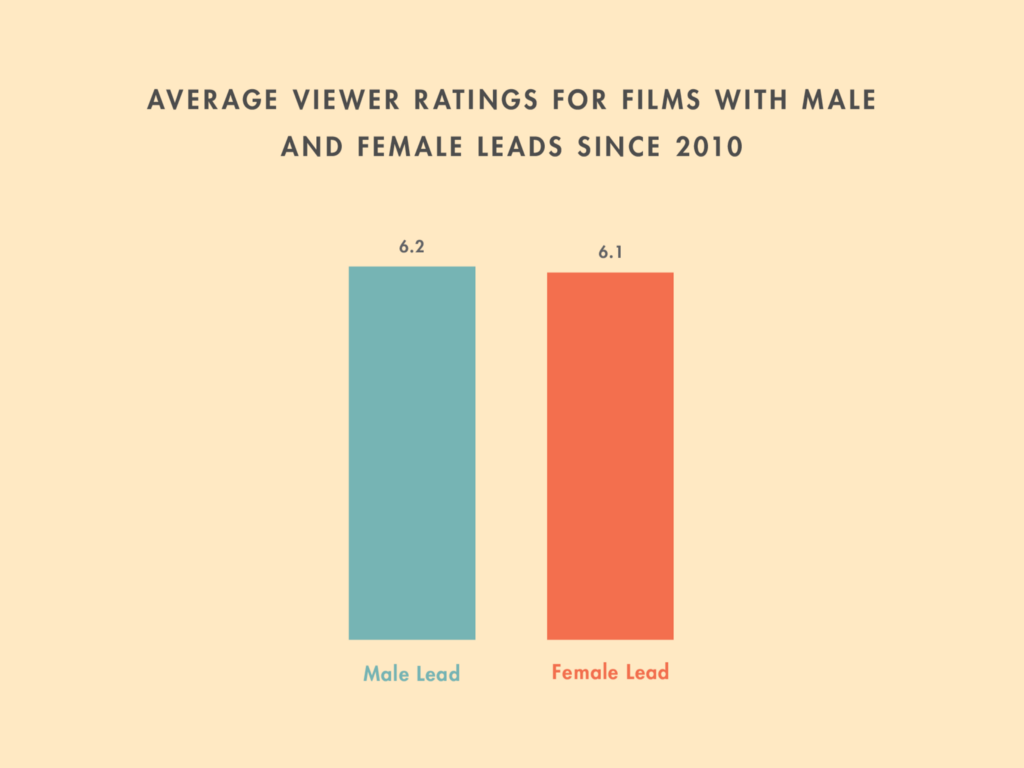
The following has been reposted from Wealthsimple with permission of the author.
What are the economics of being a woman in Hollywood? We dug into the data and found some surprises in an industry with an extremely pronounced gender pay gap.
One of the most important economic questions in Hollywood might be: How much does a particular person get paid to be in a terrible movie? It sounds like a joke (it’s kind of a joke), but it’s more than that. Lots of actors and actresses will do a good movie because it’s good, but the amount you are paid to make, say, the forgettable film “No Strings Attached” is evidence of your worth to the Hollywood economy. Which is why Natalie Portman recently commented on the fact that Ashton Kutcher, noted former husband of Demi Moore, was paid three times as much as best actress Oscar winner Portman to be in that film. “We get paid a lot, so it’s hard to complain,” Portman told Marie Claire UK in an interview in 2017, “but the disparity is crazy.” Not to mention the disparity in recognition and opportunity — for the seventh year in a row, for example, there are no women nominated for best director. And only four women have ever been nominated for best director.
On the eve of this year’s Oscars — where such hashtags as #OscarsSTILLSoWhite will be doing battle with #WowThereAreSoManyMaleNominees — we decided to look at the numbers in the film industry. Some of those numbers were more interesting than we expected (for instance, Melissa McCarthy gets her employers a 220% return on investment; Tom Cruise provides only 213%).
The Pay Gap If You’re an Actress Is Even Greater Than If You’re a Highway-Maintenance Worker.
Actually, female highway-maintenance workers are some the few people who make more than their male counterparts, on average. The wage gap varies greatly from industry to industry. The Wall Street Journal reported last year that women in the U.S. earned more than men in only 7 out of 446 major occupations: meter readers, nutritionists, telecommunications-line installers, crane and tower operators, highway-maintenance workers, transportation/storage/distribution managers, and wood-sawing-machine setters. In professions where men earn more, the gap ranges from 99% (for parking attendants) to 64% (for pilots).
In 2016, women working as actors made, on average, 87% as much as their male counterparts, placing actresses squarely in the middle of the pay-gap spectrum. In the upper echelons of the industry, however, the gap was more dramatic: The top ten highest-paid actresses earned, on average, 42 cents for every dollar earned by their male counterparts. And the top five, as you can see below, earned 48 cents for every dollar earned by the top five male actors.

Jennifer Lawrence Broke New Ground, but Not by Much.
If you measure the relative size of the earnings of the top female and male earner in a given year in Hollywood, you’re going to get some wild swings. Franchises and ad deals come with multimillion-dollar bonuses, and one deal can change the average. But even with all those swings, over time the trend is clear: The top-earning actress makes, on average, 58% of what the top-earning male actor brings in — even with Jennifer Lawrence and Sandra Bullock approaching, at moments, parity with The Rock and Johnny Depp, respectively.
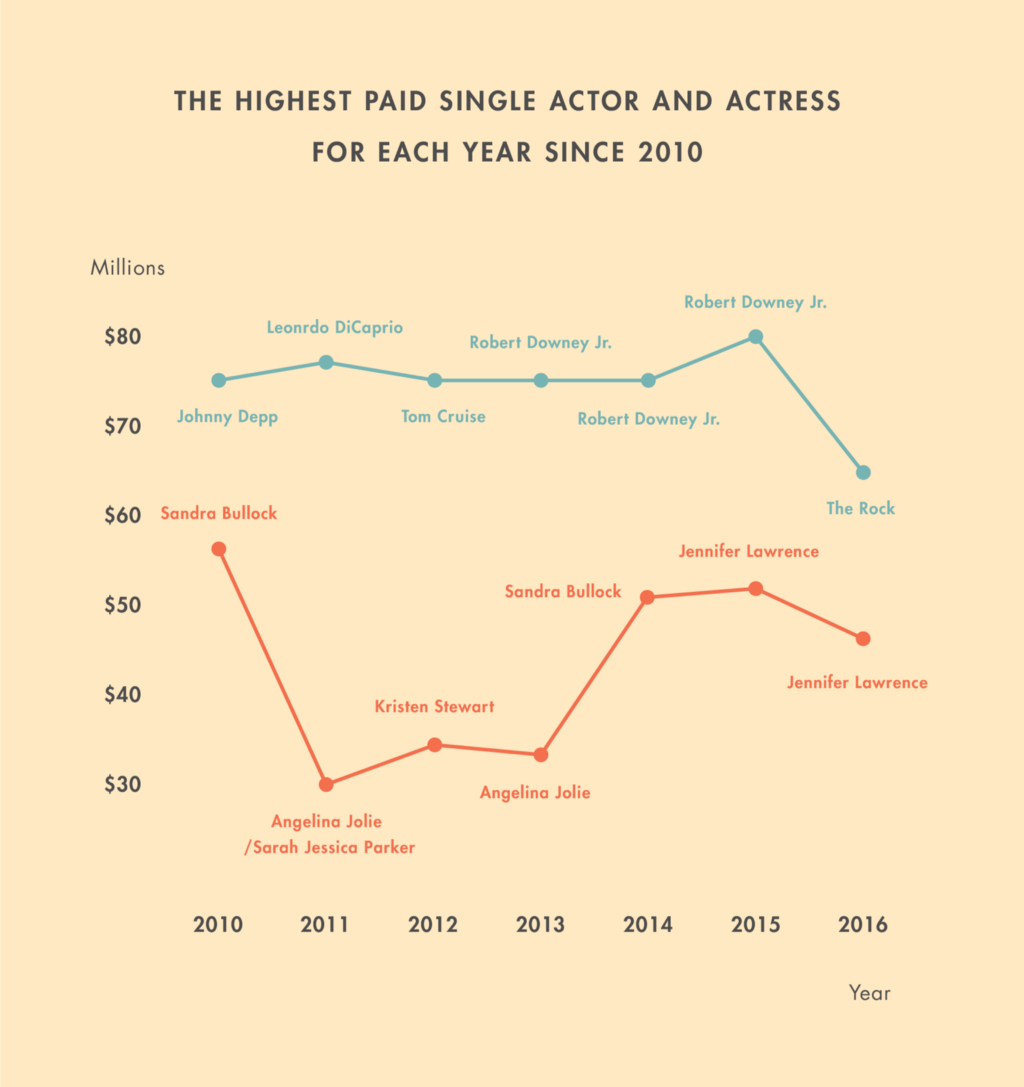
The Gap Can Be Even Worse Behind the Camera.
Beyond the wage gap, the paucity of women in the Hollywood workforce, period — producers, editors, executive producers, writers, directors, and cinematographers in particular — is even more striking. The Center for the Study of Women in Television & Film, a think tank responsible for some of the most comprehensive and groundbreaking studies of women in film, recently put out a report on gender in the industry called “Celluloid Ceiling” in which they analyzed the staff on the top 250 films in the last decade and a half. There were very few women in behind-the-scenes roles in 1998, the first year examined by the study, and the gender balance has been almost stagnant since then.
Women were best represented among producers: Of the top 250 films, 24% were produced by women. “Best” is relative: Only 5% of cinematographers were women. More than one third of the films in the report had one woman or fewer in behind-the-scenes roles. Film composers were the most male-heavy group: This year 3% of the top 250 films had female composers, and Anne Dudley was the last woman to win an Oscar for best original score (in 1997, for “The Full Monty”).
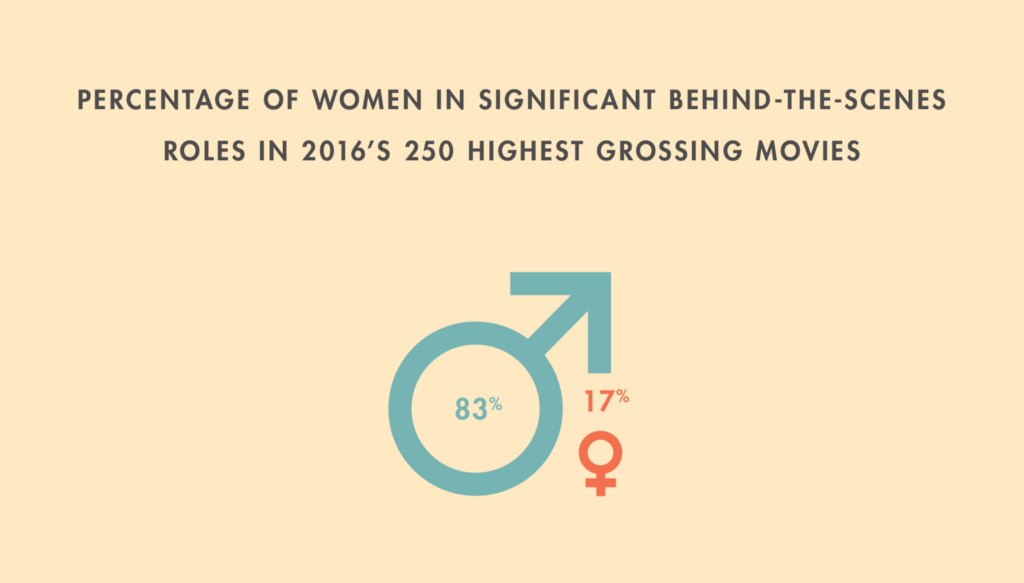
Movies Starring Men Make More Money, at Least at First Blush.
It’s easy to shake a fist at studio executives for perpetuating a culture in which actors are caviar and actresses are…kielbasa? (Just as good but way cheaper.) But the truth is that movies with male leads tend to have higher box-office grosses — with some exceptions. “Rogue One,” for example, cracked $1 billion in global box office and crushed the next-highest-grossing film, “Captain America: Civil War.” After “Rogue One,” though, the next eight highest-grossing films star men:
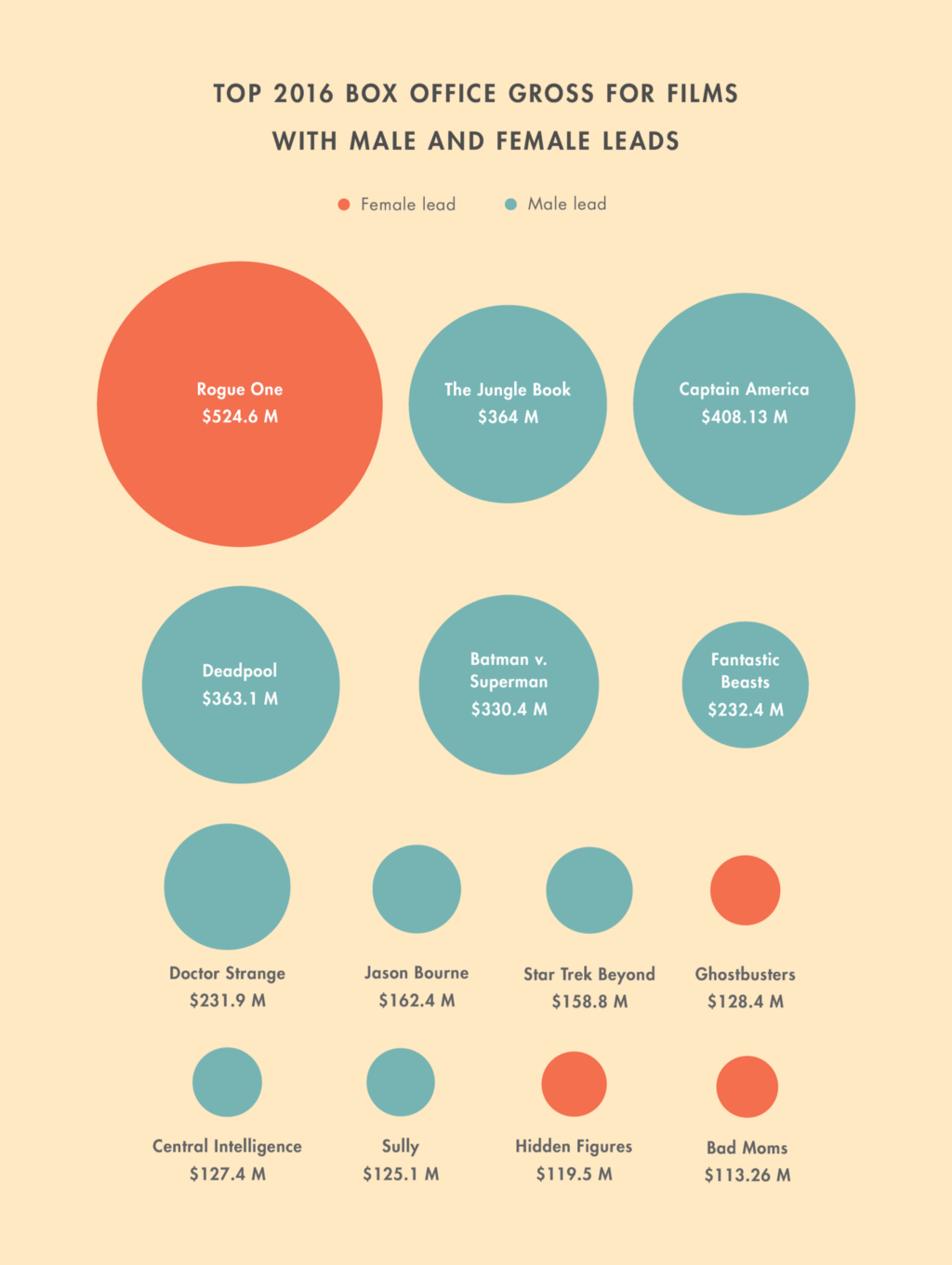
Women May Not Yet Have the Power Jobs in Hollywood, but at Least They Have More Powerful Jobs in Movies Themselves.
Historically, the professions of female characters in films have mirrored those of contestants on “The Bachelor” (“free spirit” and “dog lover” — those were actual jobs listed by contestants on that show, by the way). Lately, though, we’ve seen a marked increase in women playing doctors and scientists. In the top 30 films of 2010, only one doctor role was played by a woman. In 2016, women played almost as many doctors as men did:

Women’s Acting is Just as Impressive as Men’s.
We could have told you this without data, but here you go: Women are just as good at acting as men are. We looked at the median viewer rating for films with revenue greater than $10 million and found that films with female leads have, on average, a 6.1 rating (out of ten). Films starring men have 6.2.
But: Women Can Actually Pack a Bigger Fiscal Punch Than Men.
We were also interested in how films with female leads did proportionally. Lots of big-budget movies with stuff that blows up star men, but did smaller-budget movies starring women earn a greater percentage of their budgets? We discovered that men give a 127% median return on investment, and women give a 176% median return on investment. Which means: Put your money on McCarthy.
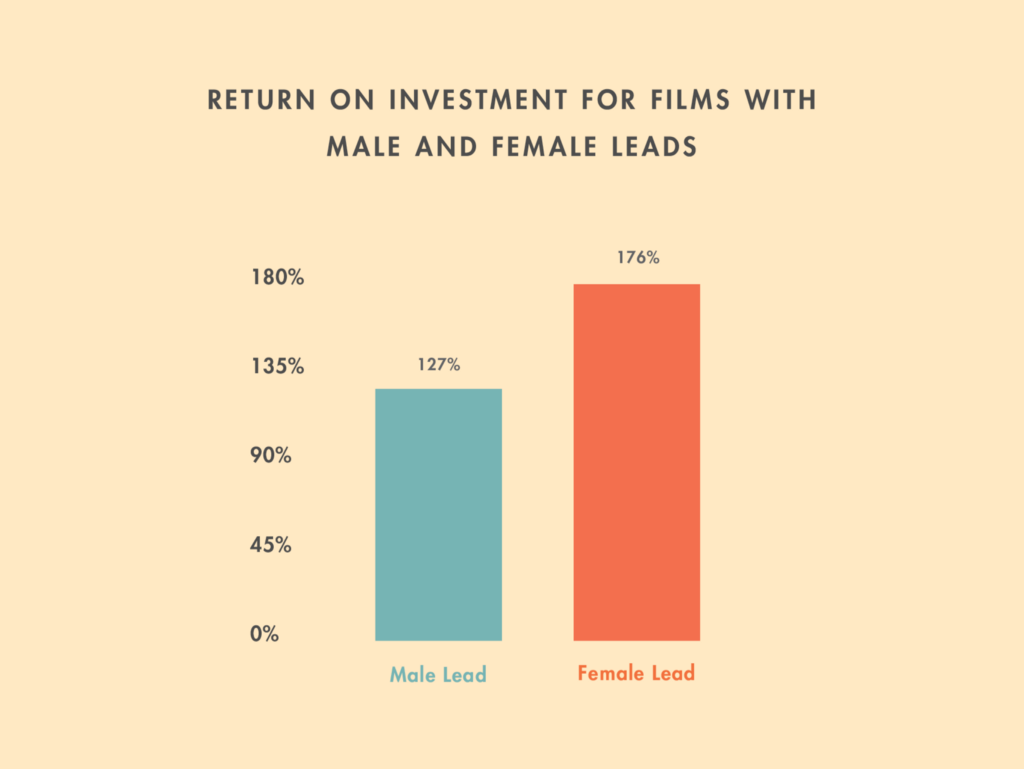
*All figures in USD
Sources:
Graph 1, 2. Source: Forbes
Graph 3. Source: Center for the Study of Women in Television & Film; based on 250 highest-grossing movies in last fifteen years
Graph 4, 5. Source: Box Office Mojo; based on study of 30 highest-grossing films of 2016
Graph 6, 7. Source: Movie Database; data review
